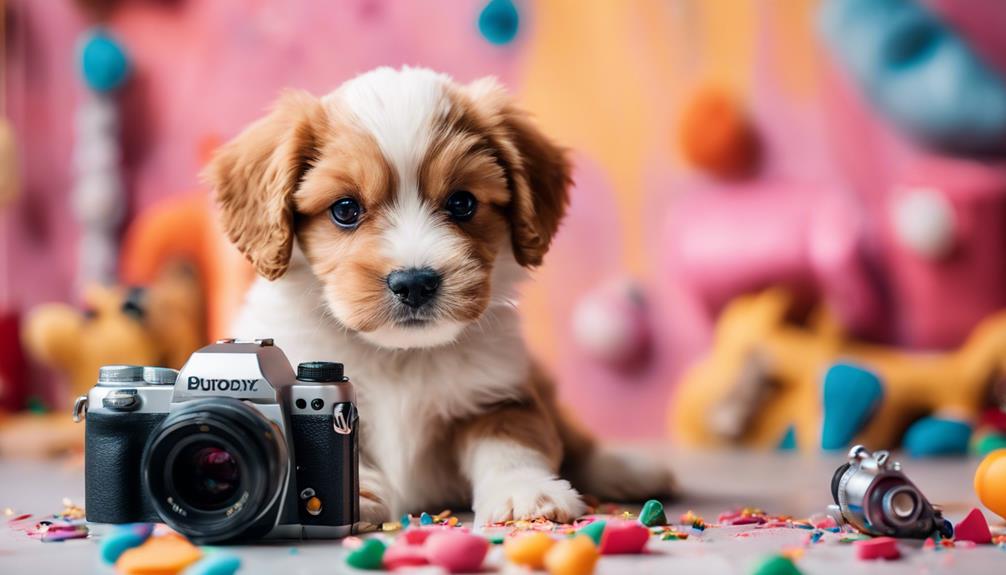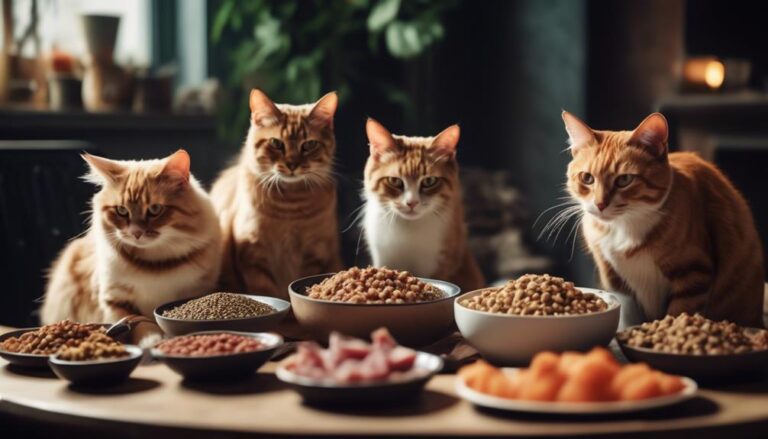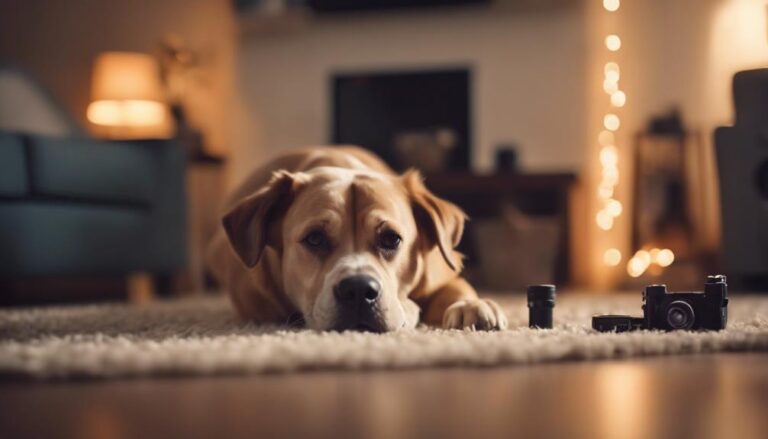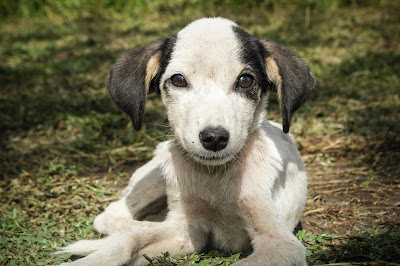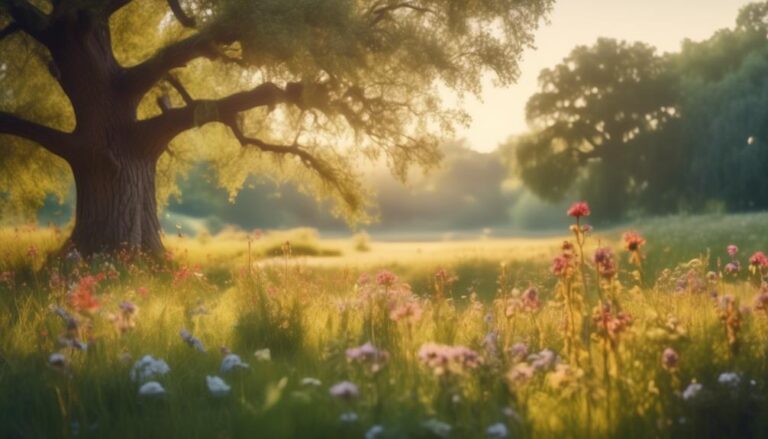Discover how DIY Pet Photography Classes can transform your pet photos from ordinary to extraordinary. Enhance your skills, capture candid moments, and showcase your pet's personality. Learn essential camera settings, lighting techniques, composition tips, and more. Elevate your pet photography game and create stunning images that truly capture the essence of your furry friends. There's a world of creative possibilities waiting for you in the world of DIY pet photography classes.
Benefits of DIY Pet Photography Classes
If you're a pet owner looking to capture better moments with your furry friend, enrolling in DIY pet photography classes can enhance your skills considerably. These classes not only help you stay updated on DIY pet photography trends but also provide a platform to explore creative pet photo challenges. One of the trends gaining popularity in the DIY pet photography world is capturing candid moments that showcase the unique personality of your pet. Through these classes, you'll learn how to set up shots that highlight your pet's quirks and characteristics, resulting in more authentic and memorable photos.
Moreover, DIY pet photography classes often include creative pet photo challenges that push you to think outside the box. These challenges can range from capturing action shots of pets in motion to experimenting with different lighting techniques for artistic effects. By participating in these challenges, you'll not only improve your technical skills but also discover new ways to express your pet's individuality through photography.
Essential Camera Settings for Pet Photography
When capturing your furry friend's best moments, mastering focus and exposure settings is essential to get sharp and well-exposed photos. Experimenting with different shutter speed options can help freeze fast movements or create artistic motion blur in your pet portraits. Understanding these camera settings will elevate the quality of your pet photography and let your pet's personality shine through in every shot.
Focus and Exposure
Guarantee that your camera's focus and exposure settings are properly adjusted before capturing stunning pet photographs. Start by setting the white balance to guarantee accurate color representation. Adjust the depth of field to control how much of the scene is in focus, allowing your pet to stand out against a beautifully blurred background. When focusing on your furry friend, use single-point autofocus for precision. Pay attention to exposure settings to avoid underexposed or overexposed images. Consider using spot metering to accurately expose your pet, especially in challenging lighting conditions. By mastering focus and exposure, you can elevate your pet photography skills and capture memorable moments with clarity and vibrancy.
Shutter Speed Options
Adjust your camera's shutter speed to capture dynamic pet portraits with sharp focus and release motion effectively. When shooting pet portraits, consider the pet's activity level and desired outcome for your creative vision. A faster shutter speed, such as 1/500 or higher, can release motion, ideal for active pets or capturing detailed expressions. For creative effects like motion blur, opt for a slower shutter speed, around 1/60 or lower, to convey a sense of movement. Experiment with different shutter speeds to enhance the storytelling in your pet photography. Remember, the shutter speed you choose can greatly impact the final look of your pet portraits, allowing you to unveil your creativity and capture unforgettable moments with your furry friends.
Lighting Techniques for Capturing Pets
To capture stunning photos of your pets, mastering proper lighting techniques is essential. Here are three key tips to help you achieve the best lighting for your pet photography:
- Natural vs Artificial Lighting: When photographing your pets, consider the difference between natural and artificial lighting. Natural light, such as sunlight, can create a soft and warm glow that enhances your pet's features. On the other hand, artificial light sources like lamps or flashes can sometimes create harsh shadows. Experiment with both types of lighting to see which works best for your furry friend.
- Reflectors and Diffusers: Reflectors and diffusers are essential tools for controlling and manipulating light when photographing pets. Reflectors bounce light back onto your pet, filling in shadows and creating a more balanced exposure. Diffusers help soften harsh light, reducing glare and creating a more pleasing light for your pet's portraits. Invest in a good quality reflector and diffuser to improve the lighting in your pet photos.
- Avoid Direct Harsh Light: Harsh direct light can cause your pet's fur to appear blown out and their features to be lost in shadows. To avoid this, position your pet in a shaded area or use a diffuser to soften the light. Indirect or diffused light is generally more flattering for pet photography, enhancing their features and creating a more natural look in your images.
Composition Tips for Pet Portraits
When capturing pet portraits, make sure your composition enhances the overall appeal of the image by considering key elements such as framing and angles. To create visually striking pet portraits, focus on pet posing and creative composition. When it comes to pet posing, encourage natural behavior by capturing your pet in their element – whether they are playing, resting, or interacting with their surroundings. This will help you capture genuine moments that reflect your pet's personality.
In terms of composition, experiment with different angles to add interest to your pet portraits. Get down to your pet's eye level for a unique perspective that can create a more intimate connection between the viewer and the pet in the photograph. Consider using the rule of thirds to place your pet off-center for a balanced and visually appealing composition.
Additionally, don't be afraid to play with negative space. Leaving room around your pet in the frame can draw attention to their features and create a sense of simplicity and elegance in the composition. Remember, composition is key to capturing captivating pet portraits, so take the time to experiment with different techniques to find what works best for your furry friend.
Choosing the Right Backgrounds for Pet Photos
Consider incorporating contrasting textures in the background of your pet photos to add depth and visual interest to your compositions. When choosing the right backgrounds for your furry friend's photoshoot, keep in mind the following tips:
- Outdoor settings: Utilize the beauty of nature as your backdrop. Whether it's a lush green park, a sandy beach, or a blooming garden, outdoor settings can provide a dynamic and colorful background for your pet photos. Experiment with different times of the day to capture varying lighting effects that can enhance the overall mood of the image.
- Pet outfits: If your pet enjoys dressing up, consider selecting outfits that complement the chosen background. For instance, a bright bandana against a neutral backdrop can make your pet stand out, while a patterned outfit against a simple background can add a playful touch to the photo.
- Background options, Location scouting: Explore various background options in your surroundings. Look for walls with interesting textures, colorful murals, or even urban settings like graffiti walls for a more edgy look. Remember to scout the locations beforehand to make sure they are safe and suitable for your pet.
Capturing Action Shots of Pets
Explore capturing the dynamic movements and playful energy of your furry companions in action shots that truly showcase their spirited personalities. When photographing pets in action, it's essential to be prepared and patient. To capture those perfect pet action poses, try using a fast shutter speed on your camera to freeze their movements crisply. This helps avoid any blur and guarantees that every detail of their playful gestures is captured perfectly.
To excel in capturing pets in motion, consider using burst mode on your camera. This feature allows you to take multiple shots in quick succession, increasing the chances of getting that ideal action shot. Position yourself at your pet's eye level to create a more engaging and dynamic perspective in the photos. This angle can also convey the pet's emotions and expressions more effectively.
Another tip for capturing action shots of pets is to use toys or treats to grab their attention and encourage playful movements. Engaging with your pet during the photoshoot can lead to more natural and candid action shots. Experiment with different angles and compositions to add variety to your pet action shots and bring out their unique personalities in each photo. Get ready to freeze those lively moments of your pets in action with these tips and techniques.
Editing Tools and Apps for Pet Photography
Looking to enhance your pet photography skills? Editing tools and apps play an important role in refining your pet photos and making them stand out. Here are some recommendations to help you elevate your pet photography game:
- Editing Software and Filters: Invest in popular editing software like Adobe Photoshop or Lightroom to have a wide range of editing options at your fingertips. These tools allow you to adjust colors, lighting, sharpness, and apply filters to give your pet photos a professional touch.
- Mobile Apps with Retouching Options: Mobile apps like Snapseed, VSCO, or Adobe Lightroom Mobile offer a convenient way to edit your pet photos on the go. These apps provide features for retouching, adding filters, adjusting contrast, and enhancing details right from your smartphone.
- Specialized Pet Photography Apps: Explore apps specifically designed for pet photography, such as 'Candid Critters' or 'Pet Camera'. These apps offer unique filters, stickers, and editing tools tailored to pet photos, making it easier to capture your furry friend's best moments.
Posing Pets for Picture-Perfect Shots
To capture picture-perfect shots of your pets, position them in natural and comfortable poses that showcase their unique personalities. When aiming for a stunning pet portrait, consider the setting and lighting to make certain your furry friend is relaxed. Start by observing your pet's behavior and movements to capture their essence. Encourage them to play or interact with their favorite toy to bring out their natural expressions.
Pet modeling involves capturing your pet's best angles and features. Experiment with different angles, such as getting down to their eye level or shooting from above to highlight their unique markings or features. For example, if your pet has striking eyes, focus on capturing the depth and emotion in their gaze. Keep your camera ready to catch spontaneous moments that reflect their personality.
Avoid forced poses or unnatural expressions, as these can make your pet feel uncomfortable and result in unflattering photos. Instead, let your pet move freely and be patient to capture authentic moments. Remember, the goal is to showcase your pet's true character in the pet portrait. With practice and patience, you can master the art of pet modeling and capture stunning pictures that you'll cherish for years to come.
Using Props Creatively in Pet Photography
Enhance your pet photography by incorporating props creatively to add depth and character to your images. Using props can elevate your pet portraits from ordinary to extraordinary. Here are three fun ways to utilize props in your pet photography:
- Pet Costume Ideas: Dressing up your pet in cute or funny costumes can bring out their personality and add a playful element to your photos. Whether it's a tiny hat, a superhero cape, or a floral wreath, pet costumes can make for adorable and memorable pictures. Just make sure your pet is comfortable and safe in the costume.
- Creative Pet Portraits: Think outside the box when choosing props for your pet photoshoot. Consider using items like vintage suitcases, colorful blankets, or even fresh flowers to create unique and eye-catching compositions. These props can help set the scene and tell a story about your furry friend.
- DIY Pet Photo Booth: Set up a simple backdrop with props like fairy lights, balloons, or a chalkboard with a cute message. This DIY photo booth can provide a designated space for capturing fun and candid moments with your pet. Encourage your pet to interact with the props for spontaneous and heartwarming shots.
Tips for Photographing Pets Indoors
When photographing pets indoors, make sure you have enough natural light or use artificial lighting to capture clear and vibrant images. Lighting is essential for a successful pet portrait. Position your indoor pets near windows or bright areas where natural light can illuminate them. If natural light is limited, consider using softbox lights or lamps to brighten the space and avoid harsh shadows on your pet's face.
To capture engaging pet portraits indoors, choose a clean and uncluttered background that will not distract from your furry friend. Simple backgrounds like a blank wall or a solid-colored blanket can help draw the viewer's attention to your pet. Additionally, get down to your pet's eye level to create more intimate and compelling shots. This perspective can showcase your pet's personality and emotions more effectively in the photograph.
When photographing indoor pets, be patient and observe their behavior to capture authentic moments. Use their favorite toys or treats to grab their attention and keep them engaged during the photoshoot. Remember to reward them for their good behavior to make the experience positive for both you and your pet. By following these tips, you can create stunning pet portraits that capture the unique personality of your indoor pets.
Outdoor Pet Photography Tips
When taking outdoor pet photographs, seek natural lighting and consider the environment's backdrop to capture vibrant and engaging images. To make the most of your outdoor pet photography session, keep in mind the following tips:
- Pet Portrait Locations: Choose locations that reflect your pet's personality and energy. Whether it's a favorite park, a beach, or even your own backyard, select a spot where your pet feels comfortable and where you can capture their unique traits. Consider places with interesting textures or colors that can add depth to your photos.
- Pet Photography Accessories: Utilize accessories like toys, treats, or props to keep your pet engaged and enhance the photoshoot. Toys can help you capture playful moments, treats can be used to grab your pet's attention, and props can add a creative touch to the images. Remember not to overwhelm your pet with too many accessories, keeping the focus primarily on them.
- Backdrop Consideration: Pay attention to the background of your photos. Look for clean, uncluttered backgrounds that won't distract from your pet. Keep an eye out for natural elements like trees, flowers, or water features that can complement your pet's fur color or add interest to the composition. Experiment with different angles to find the most flattering backdrop for your furry friend.
Pet Photography Safety and Comfort Guidelines
For important and necessary pet photography sessions, prioritize your furry friend's well-being by considering their needs and comfort throughout the photoshoot. When it comes to pet handling, always approach them calmly and gently to make sure they feel safe and secure during the photography session. Take the time to get acquainted with the pet before starting the shoot, allowing them to sniff and explore the camera equipment to ease any anxiety they may have.
Additionally, location scouting plays a vital role in making sure a safe and comfortable environment for your pet. Choose a setting where your pet feels comfortable and familiar, whether it's their favorite park or a quiet spot in your backyard. Avoid noisy or crowded areas that may cause stress or distractions for your pet.
During the photoshoot, keep an eye on your pet's body language to make sure they are at ease. If you notice signs of discomfort, such as ears pinned back or tail tucked between their legs, take a break and reassess the situation. Remember to provide plenty of treats, water, and breaks to keep your pet happy and engaged throughout the session.
Building a Portfolio of Pet Photos
To create a compelling portfolio of pet photos, focus on capturing unique and authentic moments that showcase the personality and charm of each furry companion. Here are three key tips to help you build a standout collection of pet photos:
- Capture Genuine Moments: Aim to photograph pets in their natural element, whether it's a playful romp in the park or a cozy nap at home. Authenticity shines through in pet photography and helps viewers connect with the images on a deeper level.
- Experiment with Different Angles and Perspectives: Get creative with your compositions to add variety to your portfolio. Try shooting from ground level to capture a pet's perspective or zoom in on specific details like their expressive eyes or wagging tail.
- Showcase Your Editing Skills: Enhance your pet photos with subtle edits to bring out the best in each image. Whether it's adjusting lighting, enhancing colors, or removing distractions, pet photo editing can take your portfolio to the next level and make your photos truly stand out.
Finding Inspiration for Pet Photography
When seeking inspiration for your pet photography, consider exploring different pet poses that showcase their personality and charm. Experimenting with various lighting techniques can also elevate the mood and quality of your pet portraits. Finding inspiration in these elements will help you capture enchanting images that truly highlight the essence of your furry subjects.
Pet Poses for Inspiration
Get inspired for your pet photography by exploring different poses that capture the essence of your furry friend. Here are some ideas to help you create memorable shots:
- Pet Expressions: Capture your pet's various expressions like curiosity, excitement, or contentment. Focus on their eyes and facial expressions to convey their emotions effectively.
- Pet Accessories: Experiment with accessories like hats, bows, or scarves to add personality to your pet's photos. These accessories can enhance the overall look and make your pet stand out.
- Pet Locations: Take advantage of different locations such as parks, beaches, or urban settings to create diverse backdrops for your pet photography. Each location can bring a unique vibe to your photos.
These pose inspirations can add creativity and charm to your pet photography sessions.
Lighting Techniques for Pets
Enhance your pet photography skills by mastering various lighting techniques that will bring out the best in your furry subjects. When capturing your pet's photos, consider experimenting with creative angles to add depth and interest to your shots. Utilize natural light sources like windows or outdoor settings to create a soft and flattering glow on your pet's fur, enhancing their features and textures. Avoid harsh overhead lighting that can create unflattering shadows and distort your pet's natural expressions. By understanding how light interacts with your pet's features, you can create engaging photos that showcase their unique personality and charm. Remember, patience and practice are key to mastering lighting techniques that will elevate your pet photography skills.
Frequently Asked Questions
Can I Bring Multiple Pets to a DIY Pet Photography Class?
Yes, you can bring multiple pets to a DIY pet photography class. Consider pet behavior and training needs to manage group dynamics and socialization. It's crucial to guarantee a safe and positive setting for all pets involved.
How Do I Handle a Pet Who Is Scared or Anxious During a Photo Shoot?
When handling a scared or anxious pet during a photo shoot, focus on calming techniques like using a soothing voice and gentle touch. Read their body language for signs of distress and take breaks to build trust.
Are There Any Special Considerations for Photographing Exotic Pets or Animals?
When photographing an exotic pet, consider their unique features and environment. Use lighting techniques to enhance their colors and textures. Adjust your camera settings to capture the intricate details of these special animals.
Can I Use a Smartphone Camera for Pet Photography, or Do I Need a Professional Camera?
You can definitely use a smartphone camera for pet photography. While professional cameras offer more control, smartphone cameras can produce great results. Experiment with lighting techniques and practice capturing different poses and expressions for adorable pet photos.
Are There Any Legal Issues I Should Be Aware of When Photographing Pets, Such as Ownership Rights or Consent?
When photographing pets, remember to respect ownership rights by obtaining consent from the owner before taking pictures. Make sure you have permission to use the images, and always prioritize the well-being of the animals.
Conclusion
Now that you've learned the basics of DIY pet photography, it's time to grab your camera and start capturing some amazing shots of your furry friends. Remember to experiment with different settings, lighting, and compositions to create unique and memorable pet portraits. With practice and patience, you'll be able to build a stunning portfolio of pet photos that truly showcase the love and personality of your beloved pets. So go out there and have fun snapping away!

